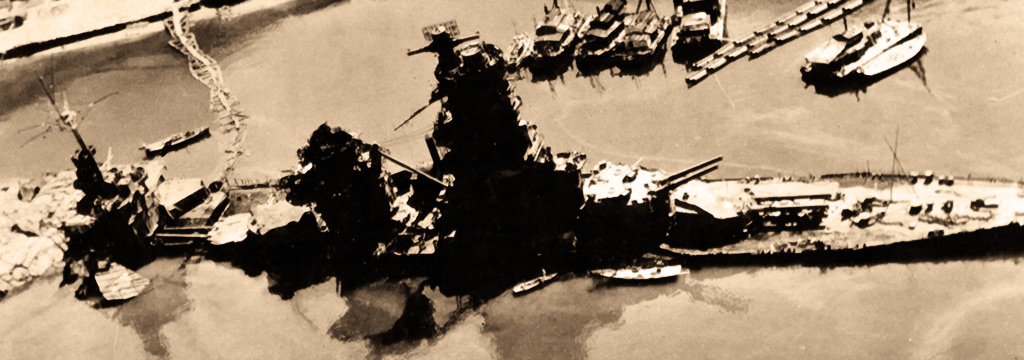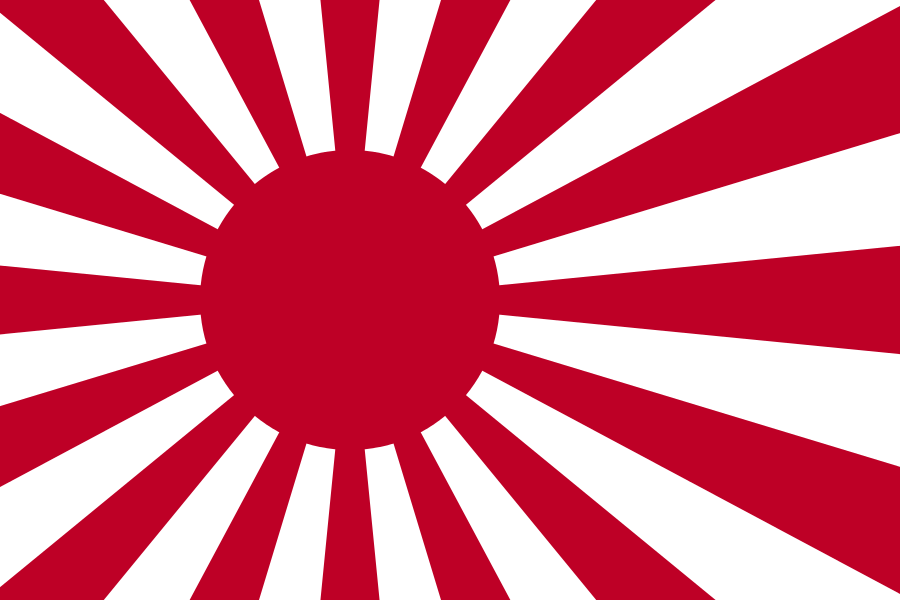Fast Battleship Haruna (榛名)
Haruna's armor was strengthened to a uniform thickness of 8 inches. The turret armor was strengthened to 10 inches (254 mm), while 4 in (102 mm) were added to portions of the deck armor. Capable of more than 30 kn (56 km/h; 35 mph) despite the significant increase in hull displacement, Haruna was now reclassified as a fast battleship. [wikipedia]
Battleship Ise 伊勢(戦艦)
From 25 February 1945 until the surrender of Japan, Ise remained docked at Kure, without fuel or aircraft, and repainted in a camouflage olive green with splotches. Ise was towed to Ondo Seto (between Kure and Kurahashijima) to serve as a floating anti-aircraft battery. She was attacked again on 24 July by 60 carrier-based aircraft, whose bombs hit the starboard bow, flight deck, main deck, No. 3 turret and bridge, killing Captain Mutaguchi, other bridge officers and around 50 crewmen. On 28 July, in another attack on Ise, she was struck by five 450 kg (1,000 lb) bombs dropped by F4U Corsairs from USS Hancock, and eleven more bombs dropped by other aircraft from task Force 58. Ise listed starboard and sank in shallow water at 34°15′N 132°31′E.
Battleship Ise, sunk.
Battleship Hyūga (日向)
Named for Hyūga Province in Kyūshū, Hyūga was an Ise-class battleship of the Imperial Japanese Navy (IJN). Hyūga and her sister ship Ise had their two aft 356 mm (14 in) turrets (784 t (864 short tons) each) and barbettes (730 t (800 short tons) each) removed. They were replaced by a small flight deck and hangar to launch a squadron of aircraft. To compensate for the weight loss and to preserve metacentric height, the flight deck was covered with 203 mm (8 in) of concrete. Anti-aircraft weapons were also added to better fight off aerial attack. On 19 March Kure was attacked by aircraft from Task Force 58 and Hyūga was hit three times by bombs that killed 37 men and wounded 52. She was later attacked during the bombing of Kure by American aircraft from the aircraft carriers USS Essex, Ticonderoga, Randolph, Hancock, Bennington, Monterey, and Bataan from 24–28 July 1945, and her crew ran the ship aground in shallow waters.[1] [wikipedia]
Heavy Cruiser Tone
Heavy Cruiser Tone
The Japanese Heavy Cruiser Tone carried scout planes as part of the surprise attack on Pearl Harbor in December of 1941. It was reportedly sunk on 24 July, 1945. It was bombed again on 28 July.
Post-World War II U.S. propaganda films are online that show the submerged IJN warships near the major Naval base, in Kure.
Was the Haruna the Last Battleship Afloat?
Resting on the shallow harbor bottom off At the end of the war, the IJN super-dreadnought battleship, Nagato, remained afloat off Yokosuka, near Tokyo. Laid down in 2019, the Nagato served as the flagship for Admiral Isoruku Yamamoto during the attack on Pearl Harbor. She also participated int he Battle of Midway, but again did not see combat. By the end of the world when fuel was diverted to IJN aircraft carriers, she was moored at Yokosuka Naval Arsenal, Kanagawa, assigned to coastal defense near Tokyo. Without fuel and many of her guns removed to nearby defense locations, the Nagato, like the Haruna, was a formidable force, but neither were serving the intended role of a battleship.
The Nagato, afloat near Tokyo after the war, was later destroyed by atomic weapons tests.




